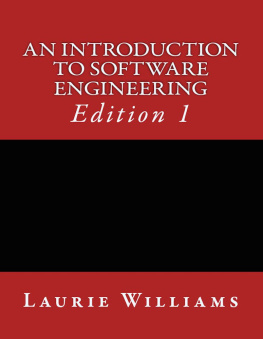Given recent increases in how much data we can collect, and given a shortage in skilled analysts that can assess that data, there now exists more data than people to study it. Consequently, the analysis of real-world data is an exploding field, to say this least. About software projects, a lot of information is recorded in software repositories. Never before have we had so much information about the details on how people collaborate to build software.
Keywords
Data Science; Software Analytics; Mining Software Repositories; Software repositories; Data mining; Data analytics
Chapter Outline
Why This Book?
Historically, this book began as a week-long workshop in Dagstuhl, Germany []. The goal of that meeting was to document the wide range of work on software analytics.
That meeting had the following premise: So little time , so much data .
That is, given recent increases in how much data we can collect, and given a shortage in skilled analysts that can assess that data [], there now exists more data than people to study it. Consequently, the analysis of real-world data (using semi-automatic or fully automatic methods) is an exploding field, to say this least.
This issue is made more pressing by two factors:
Many useful methods : Decades of research in artificial intelligence, social science methods, visualizations, statistics, etc. has generated a large number of powerful methods for learning from data.
Much support for those methods : Many of those methods are explored in standard textbooks and education programs. Those methods are also supported in toolkits that are widely available (sometimes, even via free downloads). Further, given the Big Data revolution, it is now possible to acquire the hardware necessary, even for the longest runs of these tools. So now the issue becomes not how to get these tools but, instead, how to use these tools.
If general analytics is an active field, software analytics is doubly so. Consider what we know about software projects:
source code;
emails about that code;
check-ins;
work items;
bug reports;
test suites;
test executions;
and even some background information on the developers.
All that information is recorded in software repositories, such as CVS, Subversion, GIT, GITHUB, and Bugzilla. Found in these repositories are telemetry data, run-time traces, and log files reflecting how customers experience software, application and feature usage, records of performance and reliability, and more.
Never before have we had so much information about the details on how people collaborate to
use someone elses insights and software tools;
generate and distribute new insights and software tools;
maintain and update existing insights and software tools.
Here, by tools we mean everything from the four lines of SQL that are triggered when someone surfs to a web page, to scripts that might be only dozens to hundreds of lines of code, or to much larger open source and proprietary systems. Also, our use of tools includes building new tools as well as ongoing maintenance work, as well as combinations of hardware and software systems.
Accordingly, for your consideration, this book explores the process for analyzing data from software development applications to generate insights. The chapters here were written by participants at the Dagstuhl workshop (), plus numerous other experts in the field on industrial and academic data mining. Our goal is to summarize and distribute their experience and combined wisdom and understanding about the data analysis process.

Fig. 1 The participants of the Dagstuhl Seminar 14261 on "Software Development Analytics" (June 22-27, 2014)
About This Book
Each chapter is aimed at a generalized audience with some technical interest in software engineering (SE). Hence, the chapters are very short and to the point. Also, the chapter authors have taken care to avoid excessive and confusing techno-speak.
As to insights themselves, they are in two categories:
Lessons specific to software engineering : Some chapters offer valuable comments on issues that are specific to data science for software engineering. For example, see Geunther Ruhes excellent chapter on decision support for software engineering.
General lessons about data analytics : Other chapters are more general. These comment on issues relating to drawing conclusions from real-world data. The case study material for these chapters comes from the domain of software engineering problems. That said, this material has much to offer data scientists working in many other domains.
Our insights take many forms:
Some introductory material to set the scene;
Success stories and application case studies;
Techniques;
Words of wisdom;
Tips for success, traps for the unwary, as well as the steps required to avoid those traps.
That said, all our insights have one thing in common: we wish we had known them years ago ! If we had, then that would have saved us and our clients so much time and money.
The Future
While these chapters were written by experts, they are hardly complete. Data science methods for SE are continually changing, so we view this book as a first edition that will need significant and regular updates. To that end, we have created a news group for posting new insights. Feel free to make any comment at all there.
To browse the messages in that group, go to https://groups.google.com/forum/#!forum/perspectivesds4se
To post to that group, send an email to
To unsubscribe from that group, send an email to
Note that if you want to be considered for any future update of this book:
Make the subject line an eye-catching mantra; ie, a slogan reflecting a best practice for data science for SE.
The post should read something like the chapters of this book. That is, it should be:
Short, and to the point.
Make little or no use of jargon, formulas, diagrams, or references.
Be approachable by a broad audience and have a clear take-away message.
Share and enjoy!
References
[1] Software development analytics (Dagstuhl Seminar 14261) Gall H., Menzies T., Williams L., Zimmermann T. Dagstuhl Rep J. 2014;4(6):6483. http://drops.dagstuhl.de/opus/volltexte/2014/4763/.
[2] Big data: The next frontier for competition. McKinsey & Company. http://www.mckinsey.com/features/big_data.
Software analytics and its application in practice
* Microsoft Research, Beijing, China
University of Illinois at Urbana-Champaign, Urbana, IL, United States
Abstract
A huge wealth of data exists in software life cycle, and hidden in the data is information about the quality of software and services as well as the dynamics of software development. With various analytical and computing technologies, software analytics is to obtain insightful and actionable information for data-driven tasks in engineering software and services. In this chapter, we discuss the different aspects of software analytics, and we also share our lessons learned when putting software analytics into practice.
Keywords
Software analytics; research topics; target audience; technology pillars; connection to practice













